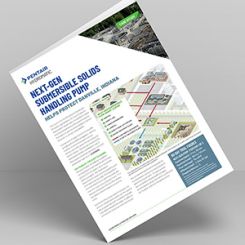Among artificial lift methods, pumps are the leading choice for many operators. According to a Spears & Associates report on the 2012 artificial lift market, pumping technologies represent 85 percent of the market share. Operators use pumps to extract more hydrocarbons from reservoirs and lower overall lift costs. Oil and gas end users continuously look for ways to optimize production throughout the life of a well. The challenge of producing more from brownfields drives the search for reliable, cost-effective technology. As a well's operating conditions change, artificial lift can adapt while keeping costs the same—or even reducing them. Intelligent well analysis can extend pump run time and decrease operating costs. Remote terminal units on wellheads can include solutions that analyze pump performance and production volumes. Near-real-time alarms and warnings can reduce remote operations overhead, leading to exception-based surveillance. Exception-based surveillance is a productivity tool that allows operations team to analyze and respond to operational issues by only responding to alarms that allow pre-emptive maintenance. This extends asset life and reduces routine-based maintenance trips.
Pumps in Artificial Lift
Sucker rod pumps are positive displacement pumps driven by sucker rod strings. A surface pumping unit—such as a pumpjack or linear, geared or hydro-pneumatic units—generates the reciprocating movement. Intelligent monitoring helps control stresses on the rod string and surface unit, as well as the pumping speed, net production, downhole pump reliability and energy consumption. The load and position of the sucker rod string are measured in real time. This data comes from the surface card and downhole card or dynagraphs. Progressing cavity pumps are the technology of choice for heavy oil, which accounts for most of the world's oil reserves. The pumping unit includes a single screw pump with an elastomer stator and a steel rotor with a chromed surface. In a standard configuration, the rotor is connected to a rotating sucker rod string that goes to the surface. A drive head creates rotating movement to the sucker rod. The drive head also supports the weight and stress generated by the sucker rod string and the pumping action. Figure 1. A diagram of a progressing cavity pump system (Graphics courtesy of Rockwell Automation)
Figure 1. A diagram of a progressing cavity pump system (Graphics courtesy of Rockwell Automation)Compact Controllers
The reservoir management team must match the reservoir inflow to the pumping system performance to determine the best optimization strategy. The team sets the strategy for exploiting the reservoir and identifies the ideal production rates. Pumping system managers must keep the equipment operating within the recommended conditions without compromising equipment health. Only with timely, accurate analysis can managers and operators set an effective production strategy. SCADA and enterprise applications provide the needed data, but often lead to high turnaround times. Compact controllers provide the right monitoring solution while enabling operators to optimize their systems proactively, rather than reactively. The compact controller combines a high-performance remote terminal unit, on-board database and extendable system kernel architecture. The controller adds to the functions of a traditional programmable logic controller by delivering real-time data and reliable control of the pumping system. The compact controller has the monitoring, data logging, transmission and analysis functions at the wellhead for all pumping systems. Figure 2. A diagram of a sucker rod pump system. The surface pumping unit moves the sucker rod back and forth.
Figure 2. A diagram of a sucker rod pump system. The surface pumping unit moves the sucker rod back and forth. Available Data
Remote surveillance and operations are key components in operating oil fields. The industrial standards behind compact controllers allow for a transparent integration with different SCADA programs and monitoring applications. All monitoring and control features and set points can be viewed and adjusted if remote operators must intervene. Compact controllers provide three important data points for optimizing any pumping system in artificial lift. Figure 3. A diagram of an electric submersible pump system
Figure 3. A diagram of an electric submersible pump system
